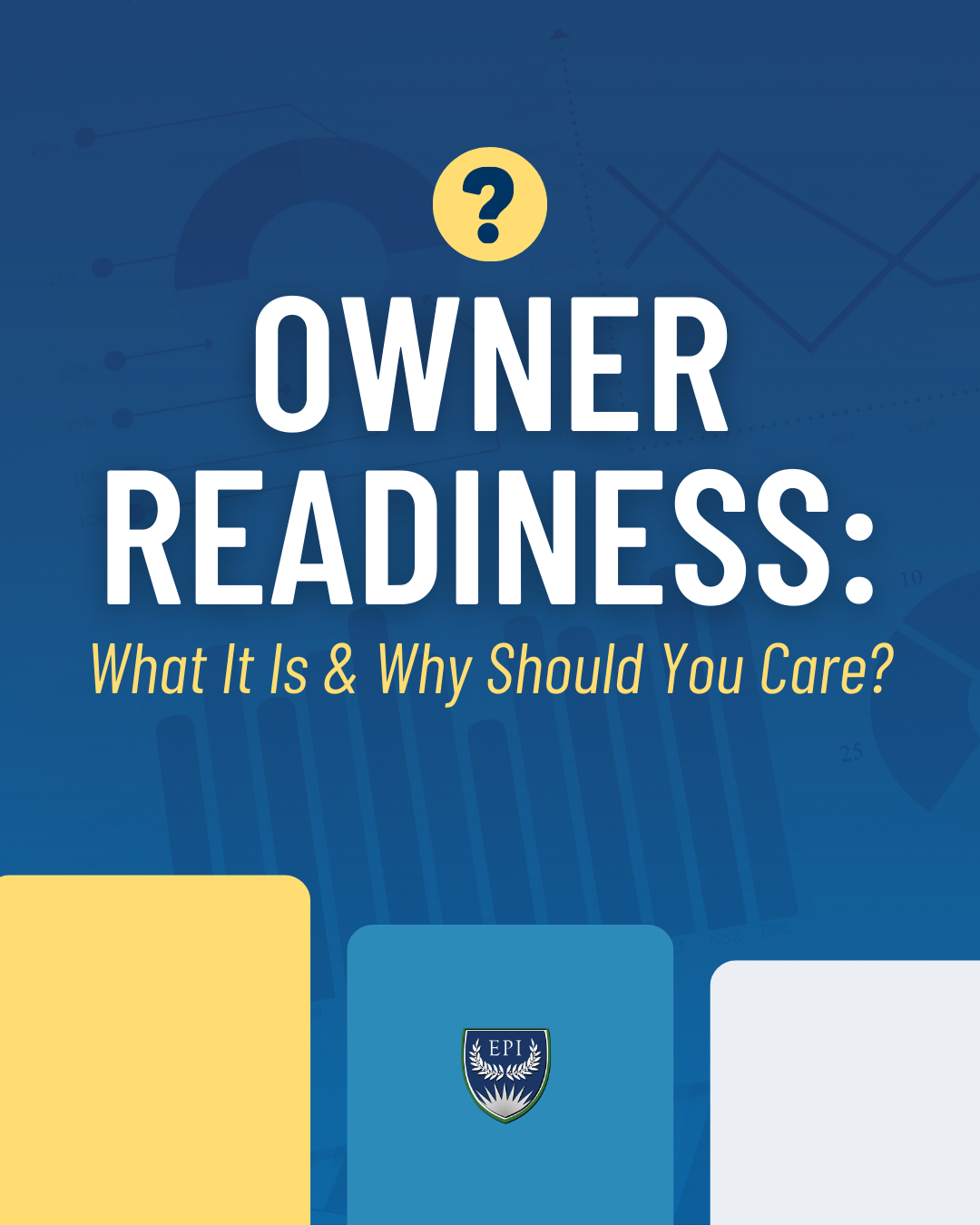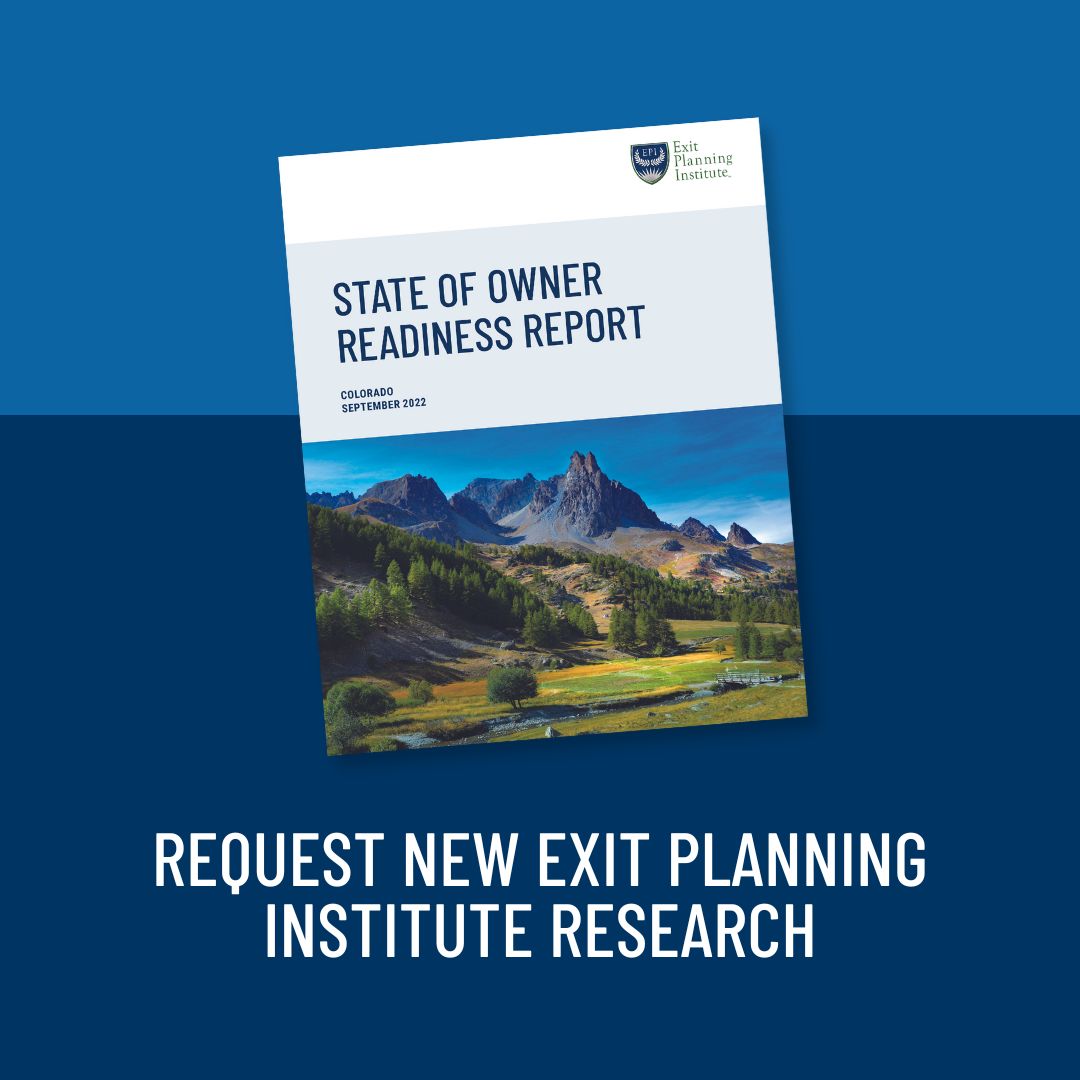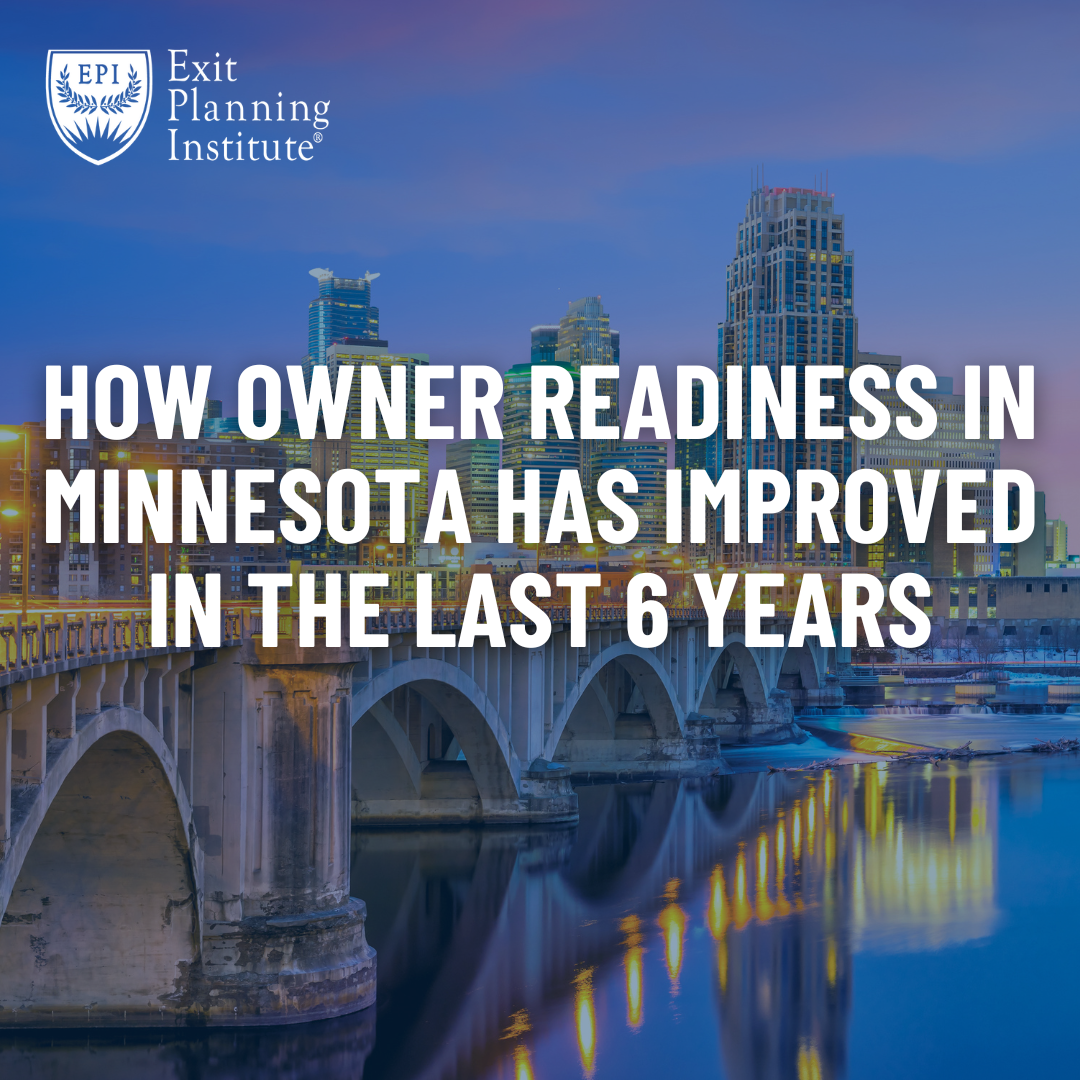
THE EXIT PLANNING BLOG
Keep up-to-date with exit planning, succession planning, industry trends, unique specialty insights, and useful content for professional advisors and business owners.
Share this
Owner Readiness: What It Is & Why Should You Care?
by Exit Planning Institute on September 15, 2025

At the Exit Planning Institute® (EPI), we spend a lot of time talking about “owner readiness.” What exactly do we mean by that term? And perhaps more importantly, why should you care?
What is Owner Readiness?
When we talk about owner readiness, we are discussing a business owner’s preparation to exit their business and transition it to new ownership—all on the owner’s terms. For many of America’s businesses, that’s an internal transition to a family member—a sibling, child, or another relative. Additionally, ownership can transition to an external buyer who wants to take over the business, or to current employees through an Employee Stock Ownership Plan (ESOP). No matter the method, owner readiness depends on a planning process that should start as soon as the owner purchases or starts the business.
Let’s be clear: “readiness” refers to the business as much as the owner. To make it a worthwhile transition, a company must be a significant business. A significant business is one that is valuable, transferable, attractive, and ready for potential buyers at any point. This last part is important because, while business owners are encouraged to prepare to exit on their terms, there are times when an exit is involuntary due to unforeseen circumstances in someone’s life. So business owners must constantly have an eye toward the end goal, examining their eventual exit through a trifold lens:
- Business: Have the business’s human, customer, structural, and social capital been developed and assessed for value?
- Personal: What’s next for the owner—personally and/or professionally?
- Financial: What are the owner’s and the business’s financial goals?
Why It Matters
Many American businesses are on the cusp of this transition phase. Consider this: According to our organization’s National State of Owner Readiness™ Survey—the first national study since 2013 to measure owner readiness in exiting private businesses and transitioning them to new ownership—73% of privately held companies in the U.S. plan to transition within the next 10 years, equaling a $14 trillion transfer opportunity.
It may be tempting to think that this statistic is reflective of older Generation X and Baby Boomer owners nearing retirement. However, only 19% of our respondents were Baby Boomers and only 39% were from Generation X—accounting for 58% in total. Generational differences—such as younger Generation X owners’ and Millennial owners’ preference to “build and exit” (and repeat with another business)—are a reality that’s impacting business ownership.
Not quite convinced? Then consider these statistics:
- There are over 30 million small businesses in the U.S. that employ nearly 62% of Americans. What that means is that their ability to transition their business affects not only their future but the futures of more than half of our nation’s workforce.
- Of those businesses, nearly 90% of owner wealth is trapped inside their largest asset: their company. This wealth is critical for them to move into the next phase of their lives, and it has a deep impact on the social and economic elements that make up our country today.
- Sobering news: 70% of the companies put on the market do not sell, and 50% of the exits will be involuntary due to external elements that force a business owner to sell or close. Think of the volatile, unforeseen moments in our recent history: the subprime lending crisis and COVID-19.
How Owners are Preparing
The 2023 National State of Owner Readiness Report revealed that early 70% of business owners identified exit strategy on their priority list, up from 6% in 2013. Translation: They know it’s vital to prepare and they are looking for help. And the EPI community stands ready.
A decade ago, there were only 180 Certified Exit Planning Advisors ® (CEPAs) across the country. Today, there are over 5,000 CEPAs. Significant strides forward were made with exit planning education and certification—and, more importantly, the perceived value of an exit planning team. More business owners are building personal exit planning teams, crafting and operationalizing written exit plans, and harvesting more value from their businesses upon exit. And, together, we’re paving paths for them to successfully exit their business while positively impacting the local economies in which they operate.
Download Our Generational National State of Owner Readiness Report
Resources:
Share this
- Blog (544)
- CEPA (419)
- exit planning (249)
- CEPA community (187)
- Business Owner (169)
- Exit Planning Summit (95)
- EPI Chapter Network (89)
- Value Acceleration Methodology (79)
- Exit Planning Partner Network (76)
- EPI Announcement (49)
- Content (48)
- Webinars (37)
- Excellence in Exit Planning Awards (33)
- Marketing (30)
- 2024 Exit Planning Summit (28)
- 5 Stages of Value Maturity (26)
- Books (24)
- EPI Academy (24)
- EPI Team (22)
- Exit Planning Teams (22)
- Leadership (21)
- 2023 Exit Planning Summit (20)
- family business (20)
- women in business (19)
- Intangible Capital (18)
- Exit Options (17)
- Black Friday (16)
- CPA (15)
- Walking to Destiny (15)
- State of Owner Readiness (14)
- Chapters (13)
- Chris Snider (12)
- National Accounts (12)
- Small business (12)
- charitable intent (12)
- personal planning (12)
- Financial Advisors (11)
- Season of Deals (9)
- 5 Ds (8)
- About us (8)
- Podcast (8)
- Insiders Bash (7)
- Scott Snider (7)
- Christmas (6)
- Exit Planning Content Library (6)
- Case Studies (5)
- Owner Roundtables (5)
- Value Advisors (5)
- financial planning (5)
- Awards (4)
- Circle of Excellence (4)
- Exit & Succession (4)
- Five Ds (4)
- Three Legs of the Stool (4)
- executive training (4)
- Owners Forum (3)
- author (3)
- forbes (3)
- DriveValue (2)
- EPI Thought Leadership Council (2)
- Exit Is Now Podcast (2)
- Peter Christman (2)
- Veteran (2)
- Whitepapers (2)
- Business Owners Forum (1)
- SOOR (1)
- business consultants (1)






